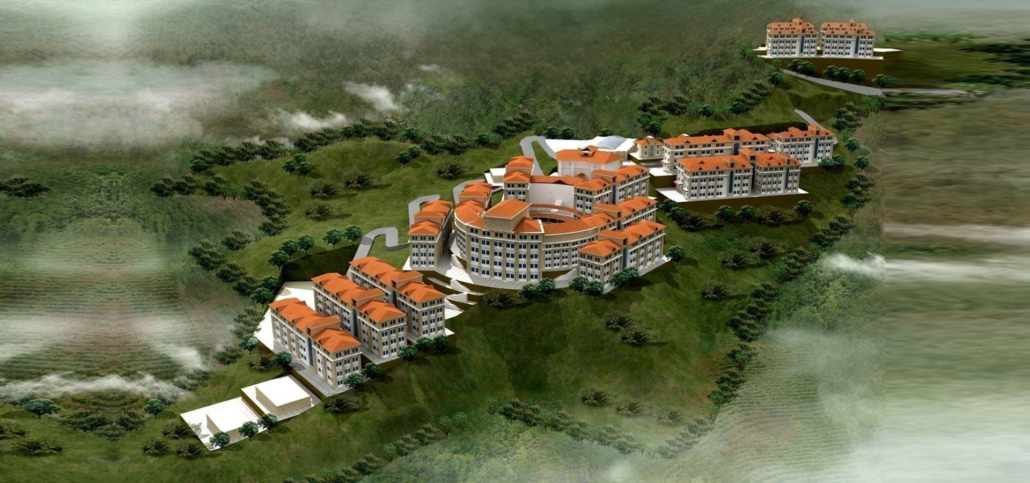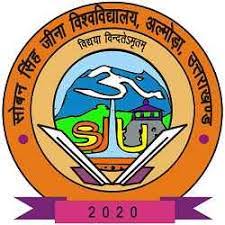
Soban Singh Jeena Government Institute of Medical Sciences, Almora

Almora, Uttarakhand, Soban Singh Jeena Government Institute of Medical Sciences (SSJGIMS)
The Soban Singh Jeena Government Institute of Medical Sciences (SSJGIMS) is a reputable government medical college. The organization is committed to providing high-quality medical education and healthcare to primarily underserved populations in Uttarakhand’s hilly regions. Since its inception, SSJGIMS has focused on developing a skilled healthcare workforce capable of addressing the state’s particular health issues.
1. The Government of Uttarakhand established SSJGIMS in response to the growing demand for medical professionals in the state, particularly in rural and mountainous areas where healthcare services are scarce. The school, which is named after Uttarakhand politician and leader Soban Singh Jeena, aims to promote high standards in medical education and produce competent medical professionals who can effectively contribute to healthcare.
The region’s healthcare infrastructure and expanding access to medical education are at the heart of the institute’s founding principles. The goal of SSJGIMS is to create a learning environment that combines current medical techniques with an understanding of the challenges facing regional healthcare.
2. The beautiful hill town of Almora in Uttarakhand, home to SSJGIMS, is renowned for its tranquility and natural beauty, making it an ideal location for healthcare practice and education. A comprehensive educational and healthcare experience is supported by the campus’s modern infrastructure and amenities. Important facilities include:
Academic Divides: equipped with cutting-edge audio-visual aids in seminar rooms, lecture halls, and classrooms.
Library: a well-stocked library with digital resources, medical journals, and reference books available for use.
Laboratories: labs devoted to anatomy, physiology, biochemistry, microbiology, and pathology that offer practical training through hands-on work.
Hostels: Boys’ and girls’ separate hostels with all the necessary amenities for a comfortable stay.
Services for hospitals: an institute-affiliated teaching hospital with numerous specialty and super-specialty departments.
The academic, clinical, and residential buildings that make up the SSJGIMS campus create a holistic setting for learning and skill development.
3. Courses Offered
SSJGIMS currently offers a bachelor’s degree program and intends to offer more courses in the future.
1. Bachelor of Medicine and Bachelor of Surgery (MBBS) The MBBS program, which lasts 5.5 years and includes a one-year internship, is the primary course offered at SSJGIMS. In accordance with the guidelines set forth by the National Medical Commission (NMC), the curriculum includes comprehensive theoretical knowledge, hands-on practical skills, and clinical training in a variety of medical specialties.
2. Future Programs The SSJGIMS intends to establish postgraduate programs in a variety of specialties to develop expertise in fields like pediatrics, general surgery, and internal medicine.
3. Courses in Paramedicine The institute also aims to provide paramedicine courses in order to meet the demand for trained personnel in areas like emergency medicine, radiology, and laboratory technology.
4. The National Eligibility and Cumulative Entrance Test (NEET-UG) is used to determine a candidate’s eligibility for admission to the MBBS program at SSJGIMS. Important steps for admission are:
Qualification for NEET: To be considered for admission, candidates must achieve a qualifying score on the NEET-UG exam.
Counseling at the state level: Seat allocation in Uttarakhand’s medical counseling agency is determined by reservation policies and NEET scores.
Eligibility Requirements: Physics, Chemistry, Biology, and English are required subjects for candidates to pass the 10+2 exam.
Verification of the Document: The NEET scorecard, proof of identity, educational certificates, and proof of residence are all required documents.
To guarantee fairness and transparency in the admissions process, the institute adheres to strict government regulations regarding seat allocation and fee structure.
5. Faculty and Departments
SSJGIMS has a solid academic framework that is supported by well-organized departments. Faculty members with years of expertise and teaching experience are in charge of each department. The following are major divisions:
Clinical Departments: Departments of Anatomy, Physiology, Biochemistry, Pharmacology, Pathology, and Microbiology; Forensic Medicine; Community Medicine; Forensic Medicine; Forensic Medicine; Forensic Medicine; Forensic Medicine; Forensic Medicine; Forensic Faculty members in medicine, surgery, pediatrics, obstetrics and gynecology, and orthopedics are actively involved in teaching, research, and clinical practice, assisting students in acquiring practical insights and in-depth knowledge. In order to prepare students for real-world healthcare scenarios, the departments place an emphasis on comprehensive medical education that combines theoretical concepts with practical applications.
6. Teaching Hospital and Clinical Training
The associated teaching hospital is an essential component of the learning experience at SSJGIMS. It provides healthcare services to the community and gives students clinical experience.
Services for Emergencies: 24/7 emergency services with trained personnel to handle medical emergencies.
OPD: Outpatient department offers public consultation services and covers a variety of specialties like general medicine, pediatrics, orthopedics, and surgery.
Services for Inpatients: Students can learn about patient management in specialties-specific wards.
Departments specialized in: Specialized services and training are provided by the departments of surgery, pediatrics, obstetrics, and orthopedics.
Facilities for Diagnostics and Imaging: includes labs for pathology, microbiology, and radiology to provide students with exposure to medical equipment and diagnostic procedures and guarantee accurate diagnosis.
Students can participate in patient care under the supervision of seasoned professionals in the ideal clinical practice setting at the hospital.
7. Research and Development
The SSJGIMS promotes initiatives in various medical fields for research, with a particular emphasis on regional healthcare issues. Projects that contribute to the improvement of healthcare standards in Uttarakhand involve students and faculty. Some areas of study are:
Public Health: Studies on how the environment, way of life, and availability of healthcare affect mountainous areas.
Health in the Environment: Altitude-related health issues and preventative measures were the focus of the research.
Diseases Infectious: Research on diseases that are common in the rural areas of Uttarakhand, with an emphasis on effective treatment and prevention methods.
The objective of SSJGIMS is to improve its research capabilities in order to address local healthcare issues while also delivering useful findings to the medical community.
8. Health Camps, Vaccination Drives, and Awareness Programs for the Community
The institute actively participates in community healthcare by organizing health camps. Medical students can gain practical experience in rural healthcare settings and gain an understanding of the region’s health issues through the community outreach activities of SSJGIMS. Additionally, these initiatives aim to raise public awareness regarding the significance of prompt medical intervention, sanitation, and preventative healthcare.
9. Facilities and Support for Students
SSJGIMS provides a variety of facilities and support systems for students to create a favorable learning environment for medical students:
Room for Reading and Studying: There are textbooks, journals, reference materials, and access to online medical resources in the library.
Accommodation: hostels for men and women with adequate security, recreational areas, and internet access for both genders.
Facilities for sports: Sports facilities, both indoors and outdoors, encourage students to stay fit and relieve stress.
Cafeteria: A wide selection of healthy meals and snacks are available in the campus cafeteria.
Guidance for Students: Students can get help with managing academic pressures, career planning, and mental health through counseling services.
10. Fees and Scholarships
Because it is run by the government, SSJGIMS has lower tuition rates than private medical schools. The state government sets the tuition for the MBBS program, making it accessible to students from all socioeconomic classes. Students from economically disadvantaged backgrounds can apply for scholarships and other forms of financial aid, including reserved category students from SC/ST/OBC backgrounds.
11. Student Life and Extracurricular Activities
SSJGIMS promotes student involvement in a variety of extracurricular activities to ensure that students have a well-rounded educational experience. Students have the chance to develop their leadership and social skills by participating in sports, cultural, and academic societies.
Festivals of culture: Students gather to celebrate various aspects of Indian culture at annual events and cultural festivals.
Competitions in sports: Sports competitions between departments encourage physical fitness and teamwork.
Workshops and conferences for doctors: Students’ academic knowledge and exposure to the industry are enhanced by attending regular medical seminars, workshops, and guest lectures.
12. Career Options and Placement
After completing their studies, SSJGIMS graduates have a variety of career options. Students in the MBBS program are prepared for:
Specializations after graduation: pursuing advanced degrees in particular fields like pediatrics, radiology, or surgery.
Work in both public and private hospitals: a chance to work as a medical officer in a private or public healthcare facility.
Academics and Research: Graduates can go into medical research or become faculty members at medical colleges.
Healthcare in the Outer Rims: Many graduates of the SSJGIMS choose to work in rural health care, enhancing public healthcare in remote areas.
13. Plans for the Future and Development
SSJGIMS has ambitious plans for the future. It wants to add more postgraduate courses, expand its facilities, and encourage collaborations with other medical institutions for research and academic exchange. In order to meet the increasing demands for education and healthcare, the institute is concentrating on raising the bar for medical education and expanding its infrastructure.
14. Conclusion
The Soban Singh Jeena Government Institute of Medical Sciences in Almora is a well-known government institution whose mission is to provide the Uttarakhand region with high-quality medical education and healthcare services. SSJGIMS is an excellent option for students interested in pursuing a career in medicine due to its commitment to community healthcare, practical-oriented curriculum, and experienced faculty.
Courses/Programs
| Serial# | Title | Estimated Cost | Program type |
|---|
